Should You Use an Amplified Indoor TV Antenna?
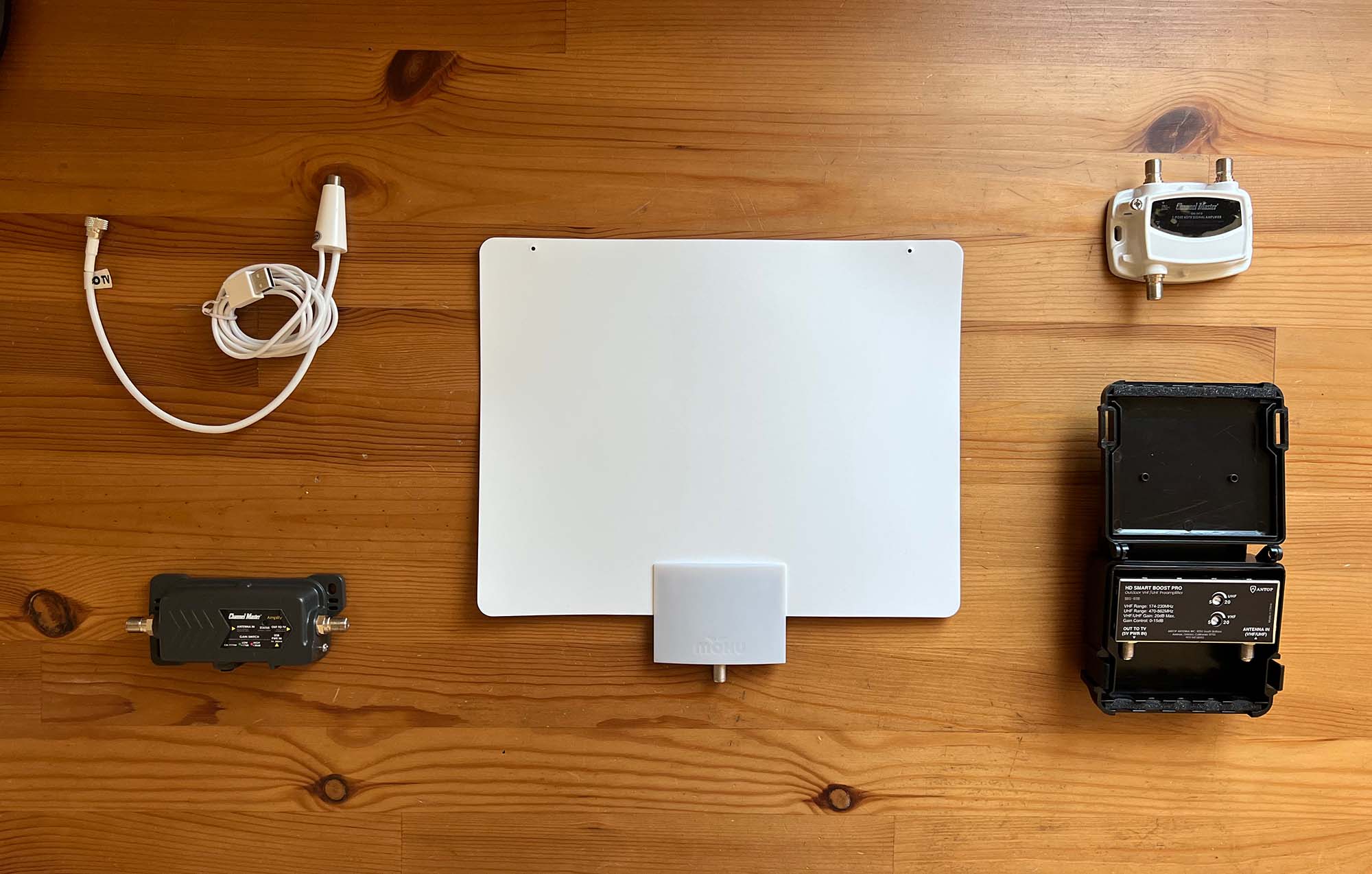
The idea of amplifying a TV signal seems to make perfect sense: if your TV signals are weak, the amplifier will increase the signal levels so you can get more channels more reliably. A no-brainer, right?
I’ve been testing both passive and amplifiers and indoor antennas for over ten years now. My conclusion is that although an amplifier is necessary in some situations such as with very weak signals or long cable runs, in many cases they don’t significantly help reception and can even hurt your reception.
Here are a few situations to determine whether or not an amplified TV antenna is right for you:
If You Have Strong TV Signals (a few miles from transmitters)…
When I lived in Providence, RI, I had a mixture of very strong signals from just a few miles away along with some weak ones. In my testing there, the amplified antennas I tested got me FEWER channels than my un-amplified Mohu Leaf!
How could that be? What happens is that the strong signals get over-amplified, which overwhelms the weaker ones, resulting in poorer reception than if you had no amplifier.
Recently, I heard from an actual transmitter engineer who works for a TV station who corroborated this explanation.
If you live close to your TV transmission towers, then I would not recommend using a powered indoor antenna. In this case, an un-amplified outdoor antenna will get you the most channels. If you can’t have an outdoor antenna, then I would recommend the Mohu Leaf indoor antenna.
If You Have Medium Level TV Signals (20 miles from transmitters)…
I now live in Los Angeles, about 20 miles away from my broadcast towers on Mt. Wilson. I can get over 100 channels with my regular Mohu Leaf indoor antenna, which is pretty amazing. But, most of them are medium-strength because of the distance.
Mohu makes a powered antenna, called the Mohu Leaf Ultimate. I figured, it’s by Mohu and it costs more than the regular Mohu Leaf antenna, so it should bring in more channels, right?
In my testing, the Mohu Leaf Ultimate brought in 114 channels while my regular Mohu Leaf brought in 105 channels, so it DID bring in more channels. But before we declare victory here, the regular Mohu Leaf had better reception for some of the low-numbered channels that I actually watch. The extra channels that the Ultimate brought in were channels that I didn’t care about (foreign language or repeats).
So in this case it was basically a tie, given the margin of error of this type of test. I’ve replicated these results with other amplifier models. Basically, they don’t hurt, but they don’t help either.
So, if you live in an area with medium TV signals (i.e., if you’re 15 to 20 miles away from your transmitters), then an amplified indoor antenna is probably not worth the additional cost. An outdoor antenna will get you the most channels. Stick with a non-amplified indoor antenna like the Mohu Leaf if you can’t set up an outdoor or attic antenna.
If You Have Weak TV Signals…
If your TV signals are weak (i.e., yellow or red in the Station Finder), then your best bet would be to use an attic or outdoor antenna, hands down.
If, however, you are not able to do that, then an amplified indoor antenna might help. I would recommend one of these indoor amplified antennas:
You can read my full review of the Antop HD Smart Bar Antenna here.
If You Have Long Cable Runs…
This case mostly applies to when you’re using an outdoor or attic antenna, and you’re driving multiple TVs in your home. You’ll probably have a long cable run. That’s when an amplifier can be necessary.
You’ll probably want a stand-alone distribution amplifier with several outputs. It should be placed at the end closest to the antenna, NOT at the end closest to the TV. If you put your antenna in the wrong location, you’ll lose most of the benefit of having an amplifier.
Channel Master makes a line of high-quality TV antenna distribution amplifiers:
I also like the Antop HD Smart Boost Pro preamp if your antenna is not in a location that has power nearby. It has a power module that sends power back up through your antenna’s coax cable to the preamp, which then can be placed near your antenna.
Disclosure: Some of the links on this page are affiliate links. This means if you click on the link and purchase the item, I will receive an affiliate commission at no extra cost to you. I test or research each product or service before endorsing. This site is not owned by any retailer or manufacturer. I own this site and the opinions expressed here are mine. As an Amazon Associate, I earn from qualifying purchases.
The Bottom Line
So, TV antenna amplifiers are not all hype – there are situations where they can help or are necessary! You just need to know which situation you’re in before buying.
Please comment on your experiences with antennas, whether amplified or not! – Brian
Keep in Touch – Subscribe for Free
If you liked this article, please sign up for email updates. I’ll send you a note when I publish a new article, no more than once every few months. Unsubscribe any time. – Brian


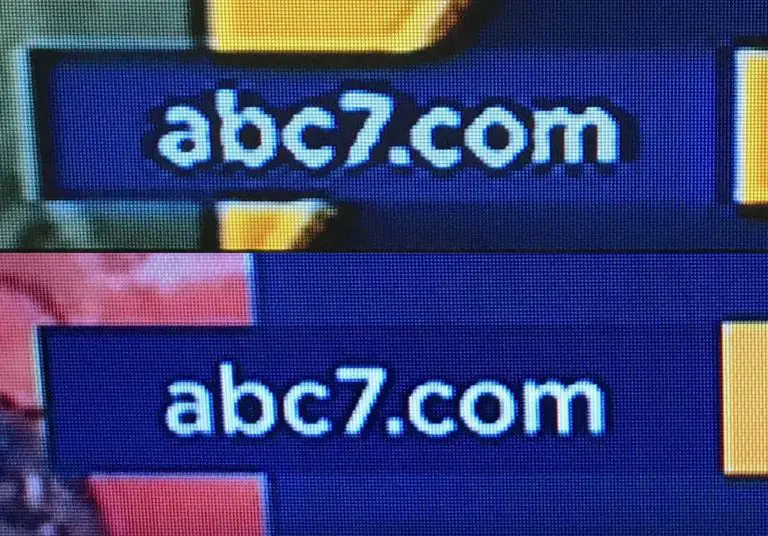
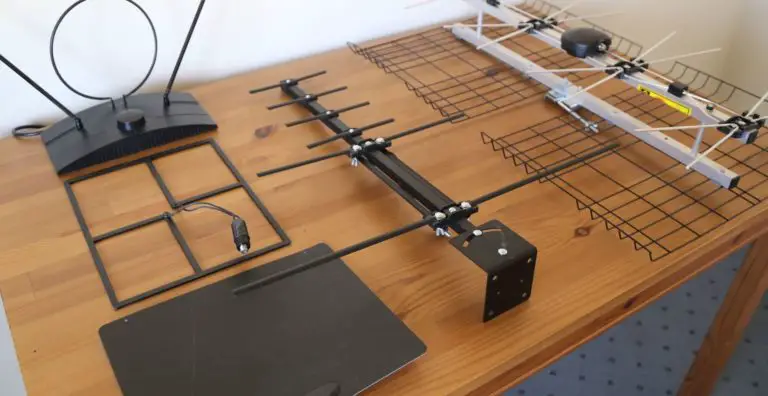
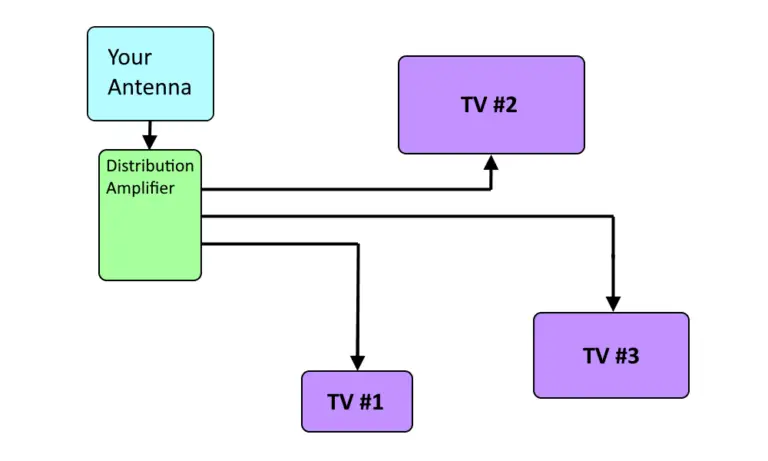
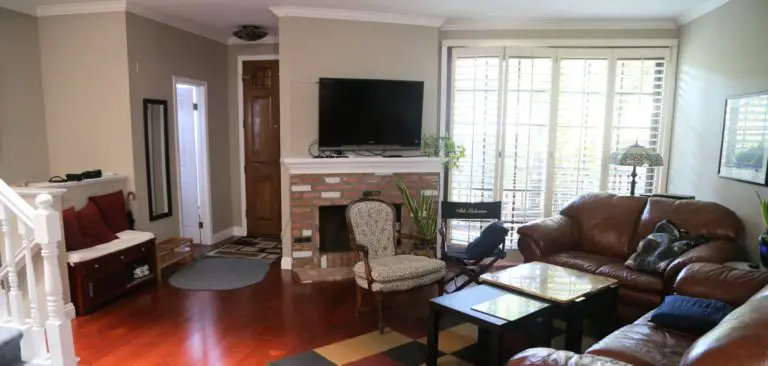
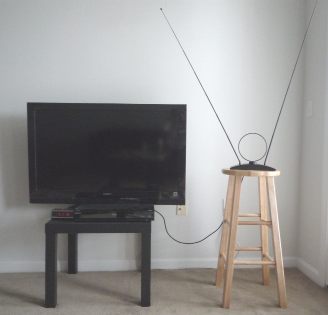
Just moved to Billings. My Spouse, and I missed the array of Channels in Phoenix ! We have a Leaf style of Annenta. I am open to suggestions.
Ok
Hi Charles,
There are just not as many channels in Billings compared to Phoenix, unfortunately, If you are not getting all of the channels in the Station Finder, you can try using an outdoor antenna…
https://www.disablemycable.com/station-finder/
Best,
Brian
I can get up to date news but not TV programs.
That’s just the nature of broadcast TV. There are some new shows on the major networks, but there are also a lot of reruns. – Brian
Why can’t I get up to date tv programs ??? With an amplifier or without I am getting the old series, ” Last Man Standing”. It has been cancelled in 2021.
How do I know where the transmission towers are located? I’m in KCMO
Hi Bill,
Use the FCC’s station finder described on this page:
https://www.disablemycable.com/station-finder/
Enter your zip code. When the stations come up, click on the station’s call letters to see that station’s transmitter on the map.
Best,
Brian
Hi, I am in 91367 zip code and am able to get channel 8 (8.1, 8.2, 8.3, 8.4, 8.5,..) over the air with an outdoor antenna.
However, I am not able to get all of the sub-channels all of the time.
Why does only one or two of the sub-channels stop for some reason?
Thank you.
Gary
Hi Gary,
I’m not sure why that is, but I’ve noticed the same thing here.
Best,
Brian
The amplified antennae will always outperform the simple antennae just by definition but overloading of the signal is a problem. Get an amplifier with an attenuator so you control how strong the signals are.
How interesting that you talk about what to do with a long length of cable. I am moving into a new home this summer. I will find a good antenna service locally as well. http://ritewayantennas.com.au/services/
I was baffled. The first day I attached the antenna I got 17 channels here in Jacksonville. The second day none of those channels would come in well. I thought the antenna was bad so I bought a new one. When I attached the new one and plugged it in I got 0 channels! When I unplugged it, I got 54!!! The 1080i channels come in smooth and crystal clear. I get to cut the cord and not have to plug it in either!!!
Hi Kevin,
Wow, that is wild! I’m wondering if the antenna cable is defective (if you use the same one for both)… But, it’s moot because it’s working for you without it! Congrats!
Best,
Brian